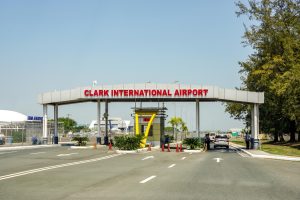Among the outcomes of the inaugural U.S.-Japan-Philippines trilateral summit on April 11, arguably the most significant was the announcement of the Luzon Economic Corridor.
Even a cursory glance hints at the scale of the initiative. The Corridor is set to include three initial projects: the $868 million Subic-Clark railway, which connects Subic Bay Freeport Zone and the Clark Freeport and Special Economic Zone in Central Luzon; the construction of a second runway and other essential facilities at Clark International Airport, valued at $174 million; and the development of a $152 million, 64-hectare Clark National Food Hub to boost the local agricultural sector. More projects are expected to be announced at the upcoming Indo-Pacific Business Forum in mid-May.
Should these projects come to fruition, they would not only offer concrete evidence of Washington’s commitment to its relationship with Manila, but also a belated proof of concept for the Partnership for Global Infrastructure and Investment (PGII), a G-7 scheme that was touted as an alternative to China’s Belt and Road Initiative (BRI). While the PGII has delivered projects in Africa and South Asia, the Luzon Economic Corridor would be its first serious foray into Southeast Asian infrastructure – and offer a much-needed boost for waning U.S. economic influence in the region.
The question is whether the Luzon Economic Corridor will be able to deliver on its promises. U.S., Japanese, and Philippine officials will need to carefully plan out the financing and manage the expectations behind the Corridor in order to make it a success.
There is little doubt that the Corridor is a timely project for both Manila and Washington. The Asian Development Bank (ADB) estimates that Southeast Asia will need to invest up to $210 billion per year to upgrade its infrastructure in order to deal with the rigors of climate change, a sum that Southeast Asian governments will struggle to afford alone.
Philippine President Ferdinand Marcos Jr. has committed to annual spending on infrastructure at around 5-6 percent of gross domestic product for the rest of his term. But also, he has to contend with a soaring budget deficit following the pandemic. As such, he has stepped up efforts to convince the private sector to invest in Philippine infrastructure, floating plans for $43 billion worth of infrastructure, from airports to bus lanes, though these efforts have yet to bear fruit.
This is where the Corridor and the PGII can support Marcos’ goals. The PGII differs from the BRI in its largely private financing model. In contrast with Beijing’s focus on loans from Chinese state banks, where local governments are often stuck with a hefty bill once the project is complete, the U.S. International Development Finance Corporation aims to offer seed money as a catalyst to mobilize up to $600 billion of private investments under the PGII banner by 2027. This approach dovetails with Manila’s fiscal limitations, and there is even hope that the Corridor may kick off an investment boom that could see Manila receive up to $100 billion in investments from the U.S. and Japan.
The success of the Luzon Economic Corridor is also important for U.S. strategy in Southeast Asia. A common criticism of American engagement with the region is that it disproportionately focuses on security instead of economics. Though Washington’s ties with Manila have warmed amid China’s increasing assertiveness in the South China Sea, the Philippines has been outspoken in its search for economic benefits. As Philippine Ambassador to the U.S. Jose Manuel Romualdez put it, “if we do not have economic security, we can have all these defense agreements, and it would mean nothing to us.” Reassuring an ally while proving to Southeast Asian partners that it can help them address their own infrastructure gaps would allow Washington to kill two birds with one stone.
Success is far from guaranteed, however. Misalignments between Western expectations and local priorities over issues ranging from environmental sustainability to workers’ rights have caused delays in other regional infrastructure initiatives.
A case in point is the Just Energy Transition Partnership (JETP), a series of multibillion-dollar initiatives that aim to help developing countries such as Indonesia and Vietnam transition away from coal-fired electricity plants. These two JETPs were launched to much fanfare in 2022, and half of the $20 billion for Indonesia was supposed to be derived from Western private investors.
While Indonesia welcomed the JETP, progress has been slow. The release of the initial investment plan from the Indonesian government was delayed by three months amid disagreements over the closing of the coal plants that feed Indonesia’s metal processing industry. Some Western institutions recoiled at the thought of funding coal power plant retirement, feeling that compensating the plant owners to shut their operations early is equivalent to funding coal. Indonesian officials chafed over the JETP’s preference for loans over grants, fearing that these may worsen Indonesia’s debt burden.
It is still early days for the JETP and the Luzon Economic Corridor, and hiccups can be resolved with enough time and political will. However, the JETP’s struggles underscore the importance of managing the expectations of host and donor countries. Implementing a project like the Subic-Clark railway on schedule could determine whether the initiative attracts a steady line of private investors, or whether it struggles to take flight.

































